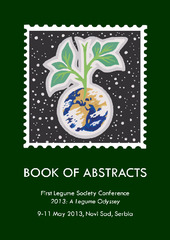| dc.description.abstract | Legumes have played a significant part in human diets from the very dawn of mankind and it is no wonder they entered culture in various ways. In the most recent times, legumes have become present in comedy television programmes, such as “Mr. Bean” by Rowan Atkinson. “Monty Python’s Flying Circus” is a widely known British comedy programme, where legumes appeared in numerous sketches. Common bean (Phaseolus vulgaris L.) was mentioned in the famous sketch “Spam” by a waitress, portrayed by Terry Jones, as an ingredient of a meal called “Spam, Spam, Spam, Spam, Spam, Spam, Spam, Baked Beans, Spam, Spam, Spam and Spam”. They were also immortalised by Terry Gilliam, who was devouring them laying on a sofa and constantly asking for more in the sketch “Most Awful Family in Britain”, with notorious and almost unintelligible screams “I want more beans!’’. However, the most surrealistic appearance of legumes in “Monty Python’s Flying Circus” surely was in the episode “Dennis Moore” in which this highwayman, portrayed by John Cleese, robbed the rich, while driving in a coach called ‘Lupin Express’, took all the plants of garden lupin (Lupinus pollyphylus Lindl.) they had hidden, brought them to a family of the poor, being convinced lupins were what they essentially needed to survive, eventually buried the whole interior of their house with this beautiful, multicoloured ornamental species and finally realized he should have provided them with money or food. There is a possibility that the appearance of garden lupin in this sketch is historically inaccurate, since it almost certain took place in late 18th century, while garden lupin arrived in England from North America in the 1820s; but, does reality matters at all in something like Monty Python’s Flying Circus? | sr |


